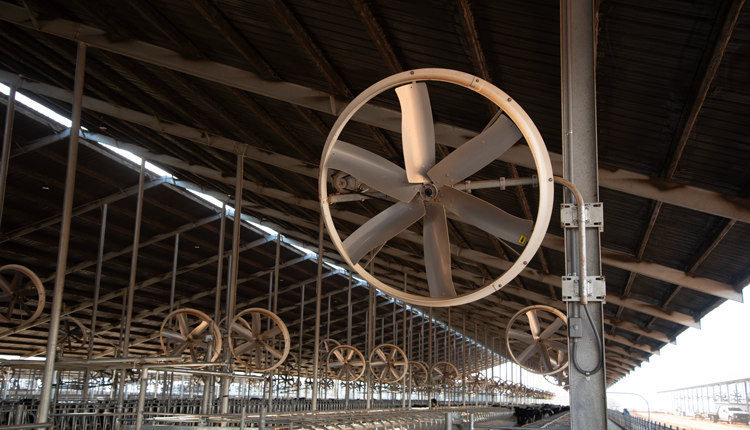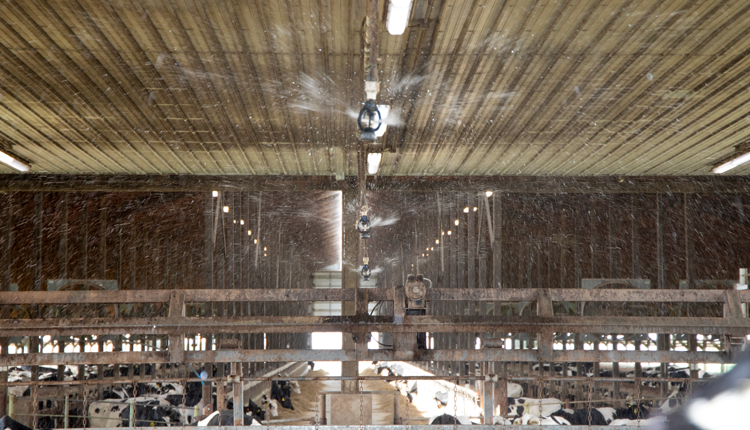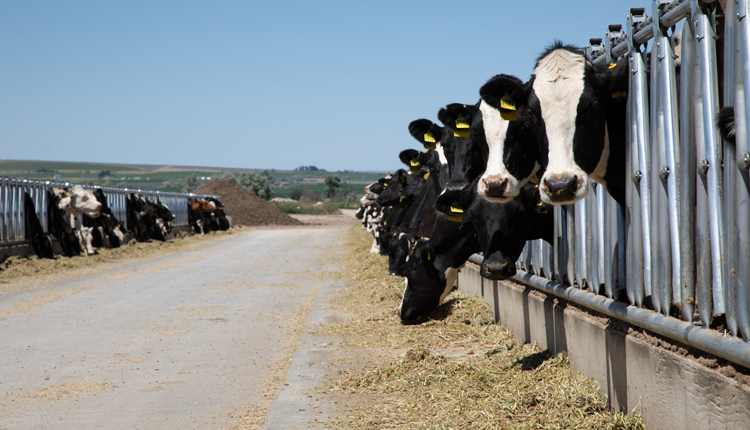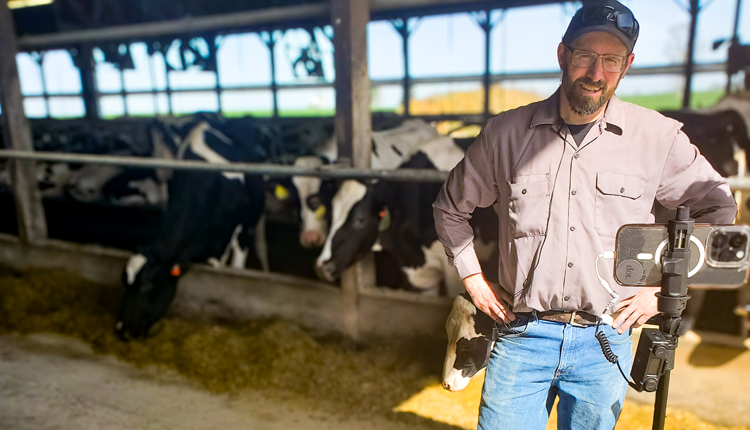Record milk prices give milk producers a financial opportunity that is simply too good to ignore – dry pen and hospital pen cooling.
They're no-brainer investments whose benefits touch every area of the dairy, from the calving pen to the milking parlor to the calf area to the culling list. In those areas and others, they pay for themselves over and over forever.
 Research evidence to back up this statement is beyond compelling, as Geoffrey Dahl (pictured), chairman of the department of animal sciences at the University of Florida, explained at five stops in the just-concluded Dairy Heat Stress Road Show. Seminar stops were made in Puerto Rico, Florida, Texas, Arizona and California.
Research evidence to back up this statement is beyond compelling, as Geoffrey Dahl (pictured), chairman of the department of animal sciences at the University of Florida, explained at five stops in the just-concluded Dairy Heat Stress Road Show. Seminar stops were made in Puerto Rico, Florida, Texas, Arizona and California.
"Bang for the buck" value is off the chart for dry pen and hospital pen cooling. Both are small areas to equip with shade, fans and misters, yet every cow on the dairy will eventually go through at least one of them at least once – which means the investments made there will benefit every cow for as long as the dairy operates.
The paybacks are enormous. In the hospital pen the most basic benefit is simple: more cows live to either reenter the herd or to walk onto the truck to go to slaughter.
In the dry pen, cooling benefits seem to reach every area where researchers have looked. Nearest and dearest to dairy producers' hearts is the milking parlor. Studies with mature cows have repeatedly shown that six weeks of dry pen cooling moves them onto a higher and very persistent lactation curve after calving, amounting to about 10 more pounds of milk per day throughout the entire lactation.
Dahl said cooled cows eat more, have better body condition at calving, have significantly higher immune function, less mastitis, fewer calving problems, and take less time to get pregnant and with fewer breedings.
Their calves, meanwhile, have higher birth weights, higher colostrum immunoglobulin (IGG) absorption and stronger immune systems, lower preweaning mortality, reach breeding size faster and produce more milk in their first lactation.
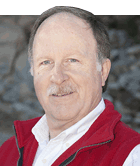 The author has served large Western dairy readers for the past 37 years and manages Hoard's WEST, a publication written specifically for Western herds. He is a graduate of Cal Poly-San Luis Obispo, majored in journalism and is known as a Western dairying specialist.
The author has served large Western dairy readers for the past 37 years and manages Hoard's WEST, a publication written specifically for Western herds. He is a graduate of Cal Poly-San Luis Obispo, majored in journalism and is known as a Western dairying specialist.
They're no-brainer investments whose benefits touch every area of the dairy, from the calving pen to the milking parlor to the calf area to the culling list. In those areas and others, they pay for themselves over and over forever.
 Research evidence to back up this statement is beyond compelling, as Geoffrey Dahl (pictured), chairman of the department of animal sciences at the University of Florida, explained at five stops in the just-concluded Dairy Heat Stress Road Show. Seminar stops were made in Puerto Rico, Florida, Texas, Arizona and California.
Research evidence to back up this statement is beyond compelling, as Geoffrey Dahl (pictured), chairman of the department of animal sciences at the University of Florida, explained at five stops in the just-concluded Dairy Heat Stress Road Show. Seminar stops were made in Puerto Rico, Florida, Texas, Arizona and California."Bang for the buck" value is off the chart for dry pen and hospital pen cooling. Both are small areas to equip with shade, fans and misters, yet every cow on the dairy will eventually go through at least one of them at least once – which means the investments made there will benefit every cow for as long as the dairy operates.
The paybacks are enormous. In the hospital pen the most basic benefit is simple: more cows live to either reenter the herd or to walk onto the truck to go to slaughter.
In the dry pen, cooling benefits seem to reach every area where researchers have looked. Nearest and dearest to dairy producers' hearts is the milking parlor. Studies with mature cows have repeatedly shown that six weeks of dry pen cooling moves them onto a higher and very persistent lactation curve after calving, amounting to about 10 more pounds of milk per day throughout the entire lactation.
Dahl said cooled cows eat more, have better body condition at calving, have significantly higher immune function, less mastitis, fewer calving problems, and take less time to get pregnant and with fewer breedings.
Their calves, meanwhile, have higher birth weights, higher colostrum immunoglobulin (IGG) absorption and stronger immune systems, lower preweaning mortality, reach breeding size faster and produce more milk in their first lactation.
 The author has served large Western dairy readers for the past 37 years and manages Hoard's WEST, a publication written specifically for Western herds. He is a graduate of Cal Poly-San Luis Obispo, majored in journalism and is known as a Western dairying specialist.
The author has served large Western dairy readers for the past 37 years and manages Hoard's WEST, a publication written specifically for Western herds. He is a graduate of Cal Poly-San Luis Obispo, majored in journalism and is known as a Western dairying specialist.

